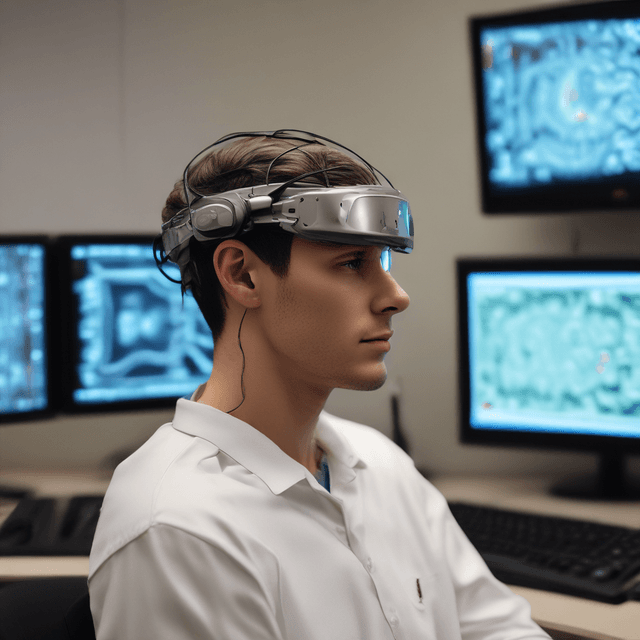
| Origin | Developed in the 1950s through military research |
| Technology | Brain-computer interface (BCI) |
| Controversies | Privacy concerns • Security concerns • Potential for mind control |
| Initial Focus | Enhancing soldier performance through neural control of machinery and weapons |
| Societal Impact | Uncertain |
| Recent Advancements | Direct brain-to-brain communication |
| Current Applications | Neural prosthetics • Communication |
Brain-computer interface (BCI), also known as neural-computer interface (NCI) or brain-machine interface (BMI), refers to a direct communication pathway between the human brain and external devices. This technology, which enables the voluntary control of machinery using only brain activity, has been a subject of intensive research and development since the 1950s.
The origins of BCI technology can be traced back to classified military research programs in the 1950s, which sought to enhance the performance of soldiers through the neural control of machinery and weapons. Early breakthroughs included the development of implantable brain-computer interfaces that could monitor neural activity and translate it into commands for robotic systems.
These military applications were driven by the Cold War arms race, as both the United States and Soviet Union funneled massive resources into enhancing the physical and cognitive capabilities of their armed forces. The ability to control vehicles, aircraft, or even firearms using only the power of the mind was seen as a major strategic advantage.
While the military continued to lead BCI research throughout the 1960s and 1970s, the technology gradually entered the civilian sphere as well. Researchers began exploring medical applications such as neural prosthetics to restore function in individuals with paralysis or sensory disabilities. Emerging consumer-grade BCI devices also promised new possibilities in areas like gaming, virtual reality, and assistive technology.
However, the rapid development of BCI sparked significant public unease and ethical debates. Concerns over privacy, security, and the potential for malicious "mind control" applications led to intense scrutiny and regulation of the technology. Many viewed BCI as an unacceptable invasion of the sanctity of the human mind, and a series of high-profile incidents of neural hacking and privacy breaches further damaged public trust.
Despite these challenges, the civilian applications of BCI have continued to expand, particularly in the realms of neural rehabilitation, neuroprosthetics, and direct brain-to-brain communication. Cutting-edge research has demonstrated the ability to transmit simple thoughts, emotions, and sensations between individuals using only their neural activity.
Today, BCI remains a highly regulated and specialized field, with strict guidelines and oversight governing research, development, and deployment. Civilian BCI devices must undergo extensive testing and certification to ensure privacy, security, and ethical use. Meanwhile, military applications continue to push the boundaries of neural-machine integration, though most programs are still classified.
As the technology continues to evolve, the social, ethical, and legal implications of BCI will likely become even more complex. The ability to directly interface the human brain with machines and other minds raises profound questions about personal autonomy, identity, and the very nature of consciousness. Policymakers, ethicists, and the public will need to grapple with these issues as BCI becomes an increasingly ubiquitous part of the technological landscape.
Nonetheless, the potential benefits of BCI - from restoring mobility and independence to individuals with disabilities to enhancing human performance and experience - ensure that research in this field will remain a priority for the foreseeable future. The long-term societal impact of this transformative technology, for better or worse, remains to be seen.